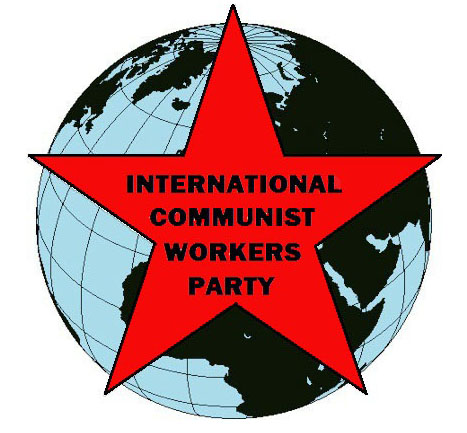|
Hundreds of millions jobless,
suicide rates spike, hunger, starvation.
. . everywhere the increasing
misery of workers meets with
"austerity schemes" of government.
It leads us to the bitter realization
that capitalism advances
through crisis. And then it dawns
on us that this capitalist crisis allows
the working class to advance
the fight for communism too.
In most cases the cause of the
crisis lies in overproduction and a
fall in the rate of profits. More
goods are produced than the
working class can afford to buy,
and therefore more than the
bosses can sell at a profit. These
crises destroy inefficient enterprises.
They then concentrate capital into larger,
more powerful groupings and open up wider markets
in which the surviving enterprises can realize
their profits and grow again. Capitalism advances.
Certainly that is what happened when the
world was gripped by the last major crisis in the
late 1960s. It emerged from it in the 1980s and
began a record-breaking expansion. Between
1982 and 2007 the world economy tripled in size.
This is even more remarkable because the previous
period of growth from the end of World
War II until the late 60s has been termed the
"Golden Age" of capitalism. Wages rose, productivity
grew and memories of the Great Depression
and World War II faded.
GROWTH ENDS IN CRISIS
Then the new crisis began in the late 60s. It too
was a crisis of overproduction. Bretton Woods
(the International Monetary Conference that set
up the US-dominated monetary system) and the
post-WW II monetary agreements began to fall
apart. Socially and politically, the youth of the
world exploded in protest against both versions
of capitalist relations of production – socialist
(state capitalist) and market economies. 1968 saw
the Prague Spring in Eastern Europe, May '68 in
France, the student uprising in Mexico City, the
Cultural Revolution in China and so on.
World capitalism was reorganized. In the
1980s it emerged from crisis, searching to re-establish
a "reasonable" rate of profit by massive
investment in East Asia, especially China. The
Chinese "Communist" Party saved world capitalism.
Through cuts in entitlements, it prompted the
mass migration of hundreds of millions of farm
workers from the country to the cities. It created
a workforce of 150 million Chinese migrant
workers who can't live "legally" in the cities and
had to submit to the tyranny of the factory or
starve. Production took off and profits grew.
Between 1990 and 2005 the working class of
East Asia increased nine-fold--from 100 million
to 900 million. To-day more than half the world's
workers live in South and East Asia. In fact, at
750 million strong, China's working class is 1.5
times larger than that of the 30 richest countries
combined.
GROWTH ENDS IN CRISIS AGAIN
But every capitalist expansion ends in crisis - a
crisis usually connected to a crisis in overproduction
and a falling rate of profit. This
crisis, starting in the USA in 2008, is no
different. In 2012 China produced 716
million tons of steel - almost half the
world's production - but its steel industry
has the capacity to produce 900 million
tons! "From chemicals and cement to earth
movers and flat screen televisions," the Financial
Times (6/17/13) pointed out, "Chinese
industry is awash with excess
capacity that is driving down profits inside
and outside the country and threatens to
further destabilize China's already shaky
growth."
What we are describing may be a problem
in China but it is not a Chinese problem.
When China fights overproduction
by closing down some steel mills, miners
in Brazil, Australia, South Africa and other countries
are laid off, because China consumes 60%
of the world's iron ore imports. Other major manufacturing
industries will experience similar scenarios.
The scope and scale of the present crisis suggests
that it is far from being worked out. In form
it is a crisis of over production (the likes of which
capitalism has resolved in the past). In content
(its size) it points to a period of sustained instability
where the impulse for mass movements -
whether fascist or communist - will gather urgency.
The masses move against the attacks,
looking for a solution to their problems. The
bosses try to win them to nationalism and racist
attacks on other workers. But given the alternative,
workers will fight against capitalism and for
communism. Never in the history of capitalism
has the industrial working class been so huge. We
are entering a revolutionary period. It won't be
easy but we have a share-and-share alike communist
world to win.
Next issue we will discuss the size of the problem
and the dangers of war.
|
